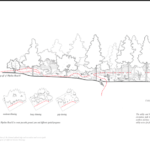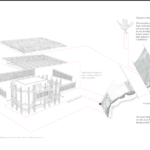Wood construction has grown out of the relationship between people and the landscapes they inhabit. Small diameter timber is a material that was once a key component of vernacular building around the world but is now problematized as a low-value byproduct of forest management. This thesis studies the material’s prevalence in Korean and Coast Salish architecture as a dimension of their respective traditional ecological knowledges. Their stories provide lessons that prompt us to question our contemporary relationships to materials and the landscapes that create them. To further explore this, I imagine Swan Creek Park in Tacoma, WA as a productive forest shaped over time by community memory, stewardship, and building.


